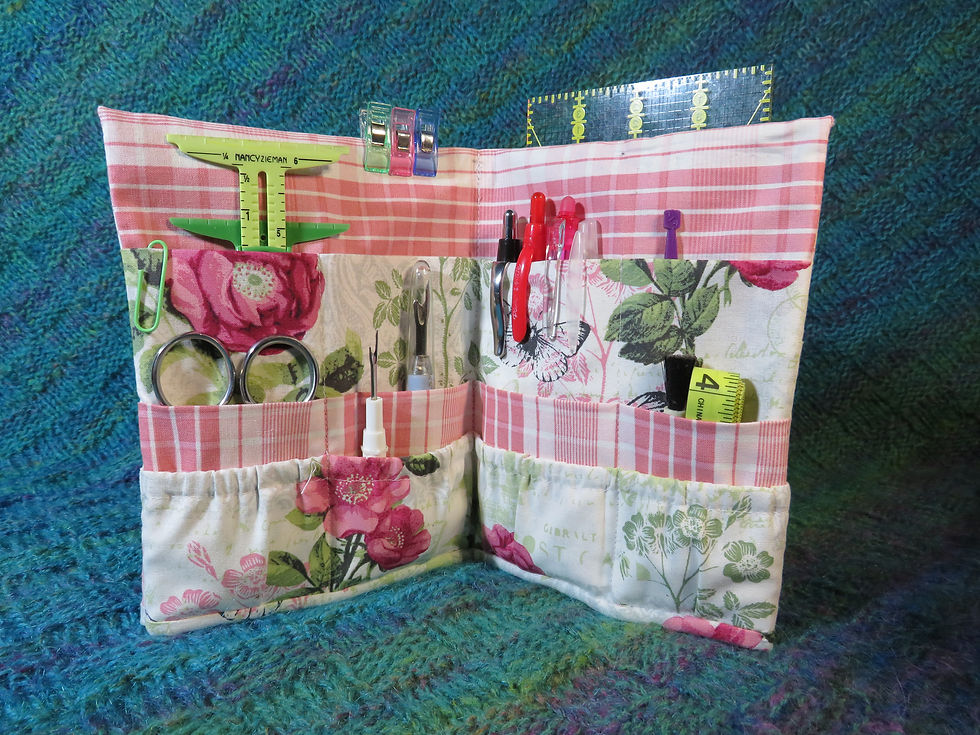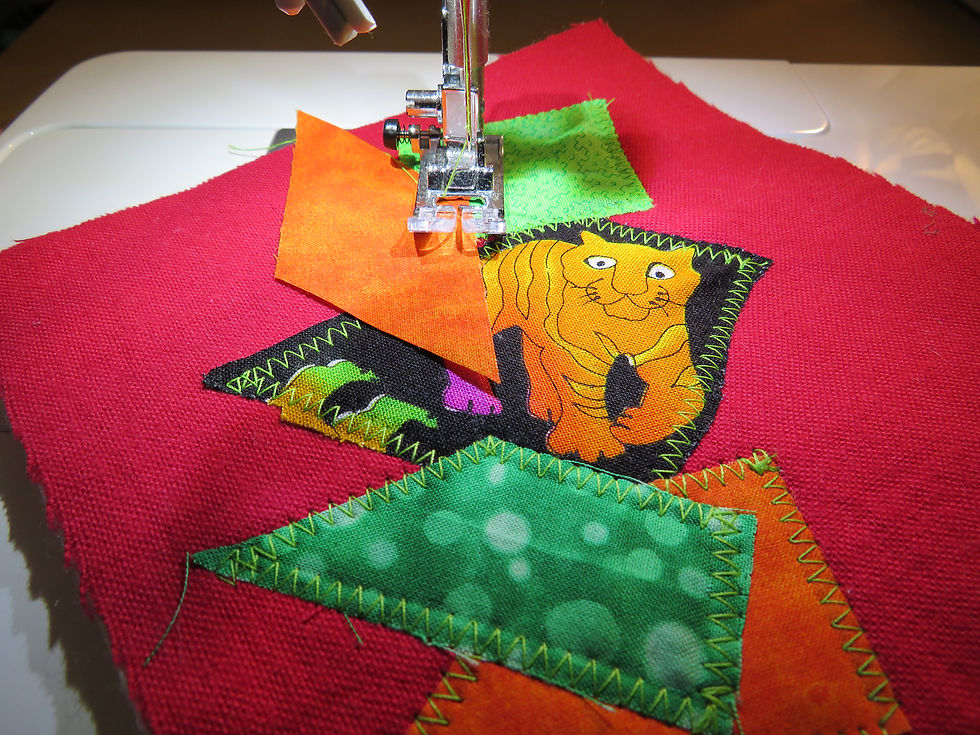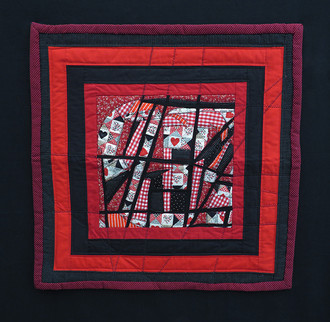The Meaning Behind Sewing: Discover the Art of Sewing with Simple Sewing Beginner Classes
- Heidi Sapere

- Aug 25
- 5 min read
Updated: Sep 2
Sewing is a timeless skill that offers a world of creativity and practical benefits. Whether you want to mend clothes, create garments, sew gifts, make curtains, or explore a new hobby, learning to sew can be fun, rewarding, and therapeutic, especially when taking beginning sewing classes.
The Art of Sewing & Why I Continue to Sew
Starting as a beginner, sewing provided a creative outlet that didn't end up on the wall, but could be seen when I stepped out the door, staring with costumes. Unlike my elaborate color pencil designs, I could create a piece within a day or a week instead of months. I loved the challenge and continued learning when it came to combining fabric, like puzzle pieces, to make something wearable, usable, and beautiful. I worked to find supportive learning environments, such as local beginning sewing classes, friends, and the Napa Valley College costuming department, that helped me understand essential sewing techniques, tools, and materials.
I created Simple Sewing beginner sewing classes to help others build a strong foundation for their beginning sewing journey with care and compassion. Students quickly move from simple projects such as the Toolkit Booklet and Tote Bags to more complex sewing goals like quilts.

What to Expect as a New Sewist in Sewing Classes and the Outside World
When you join the sewing world, you understand how important it becomes to be well-organized. My mom taught me never to leave a mess at the end of a day and to clean up before bed. These habits prevent me from losing my sewing tools and finding those lost under pattern pieces and fabric.
Even though YouTube is not real, it is still a great place to learn about different types of fabrics, threads, needles, and sewing techniques.
Reviewing basic techniques is an endless process: First, master straight stitches, backstitching, and seam finishes. Then, master different types of projects, such as garments, quilting, and utility projects like the 101 ways to make a bag. However, that's what keeps sewing exciting. Learning never ends, and there's always something new to discover.
Simple projects: It's a great idea to start with easy projects such as bags, boxes, baby quilts, and skirts.
Pattern reading: Understanding how to read and use sewing patterns is the next step in developing your sewing knowledge and understanding of universal sewing symbols.
Machine maintenance: Learning to clean and care for your sewing machine becomes a top priority to keep it out of the shop and your stitches looking great.
Let me know if you have any questions about the above, and I'll be happy to help. You can also learn all this by taking my beginning sewing class workshops.

The Meaning of Sewing: How Sewing Is Therapy
Finding the right reasons to sew significantly impacts your learning experience. Here are some tips to help you choose:
Stress relief: Even though sewing has its stresses, it can also be a great stress relief, putting your mind onto something else. I often pull out scraps and go back to simple projects. One of my favorites is taking a piece of fabric and putting batting underneath. Then, just zig-zag pieces of fabric straight onto it. I've also done this just on batting, making it a game where the whole batting piece has to be covered with nothing showing. There's also the "Quilt As You Go" technique that many quilters do.

Happy Scrappy Zig Zag Coster Meditation: When you meditate on solving a sewing dilemma and figure it out, you can let go, for a moment, of other problems happening around you. Problem-solving sewing situations also builds confidence in solving problems outside the sewing space.
Taking out frustrations: There's nothing like having a bad day and being able to redirect that energy into something positive, or redirecting those frustrations onto a frustrating project that you were able to see through to the end.
Small Steps: Getting something meaningful done in a day matters. Due to my health challenges, I don't always have the energy to do much. However, finishing a simple pot holder, pushing myself to complete one or two seams on a garment, or cutting out a pattern and its pieces allows me to keep moving forward. This mindset helps me feel accomplished, even with small tasks, and can lead to getting other things done in the future. It's always rewarding to recognize that I've achieved something, no matter how small it seems.

Don't forget your tools, for your beginner sewing classes
Before starting, here's a list:
Sewing machine: As long as it runs and you sew on it, that's the best machine for you.
Fabric scissors: Sharp scissors dedicated to cutting fabric only.
Measuring tape: For accurate measurements.
Pins and pincushion: Always good to have two or three.
Sharp Seam Ripper: I keep one near my sewing machine, one at my sewing table, and an extra in case my sewing room eats one and can't find it.
Thread: Top colors are white, black, and gray. Unless you're top stitching, you only need to match the tone of your fabric.
Needles: Sharp hand sewing and machine needles. Universal needles, such as the ones that come with your machine, work great for beginners until learning more about different types. If you're not having problems, that's all that matters.
Marking tools: Fabric chalk, washable markers, or Frixion pens. I use chalk on darker fabrics and Frixion pens on lighter fabrics. Frixion pens iron away.
Good acrylic rulers: 12 x 6, 18, and 24 inches, are my favorites for measuring and creating straight lines. A good quality French curve is essential for garments—quilting squares for boxed corners or getting into piece work.
Tips for Sewing Success: in your beginner sewing classes
To get the most out of your sewing experience, keep these tips in mind:
Practice regularly: The more you sew, the better you'll grow!
Ask questions: Don't hesitate to seek help. I'm here for you.
Start with simple projects: Build your skills gradually.
Be patient: Sewing takes time and practice to master.
Keep a sewing journal: Track your progress and note helpful tips.
HAVE FUN! Try new things, make mistakes, and overcome new challenges.
Embrace Your Sewing Journey
Embracing the right mindset is key to unlocking your creativity and mastering your sewing skills. With proper instruction, the right tools, and unwavering determination, you can craft beautiful items that embody your personal style and hold deep meaning. The possibilities are limitless, whether you're sewing for joy, fashion, or home décor.

















Comments